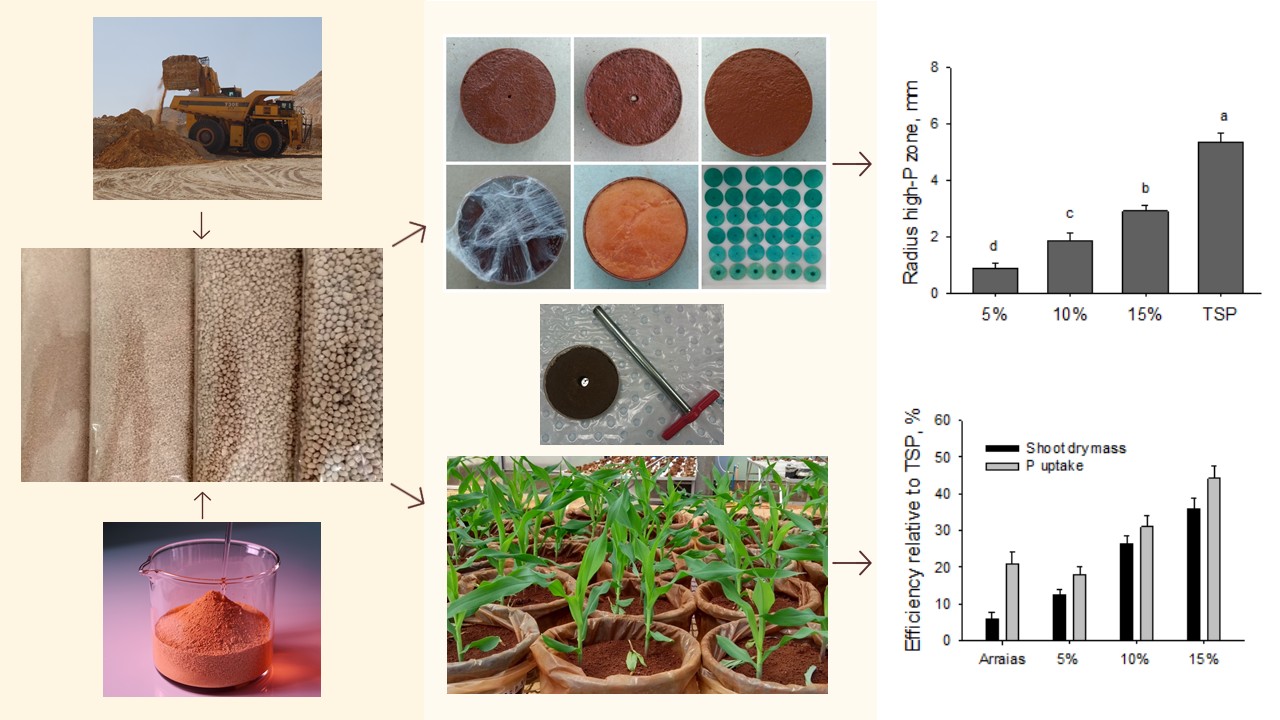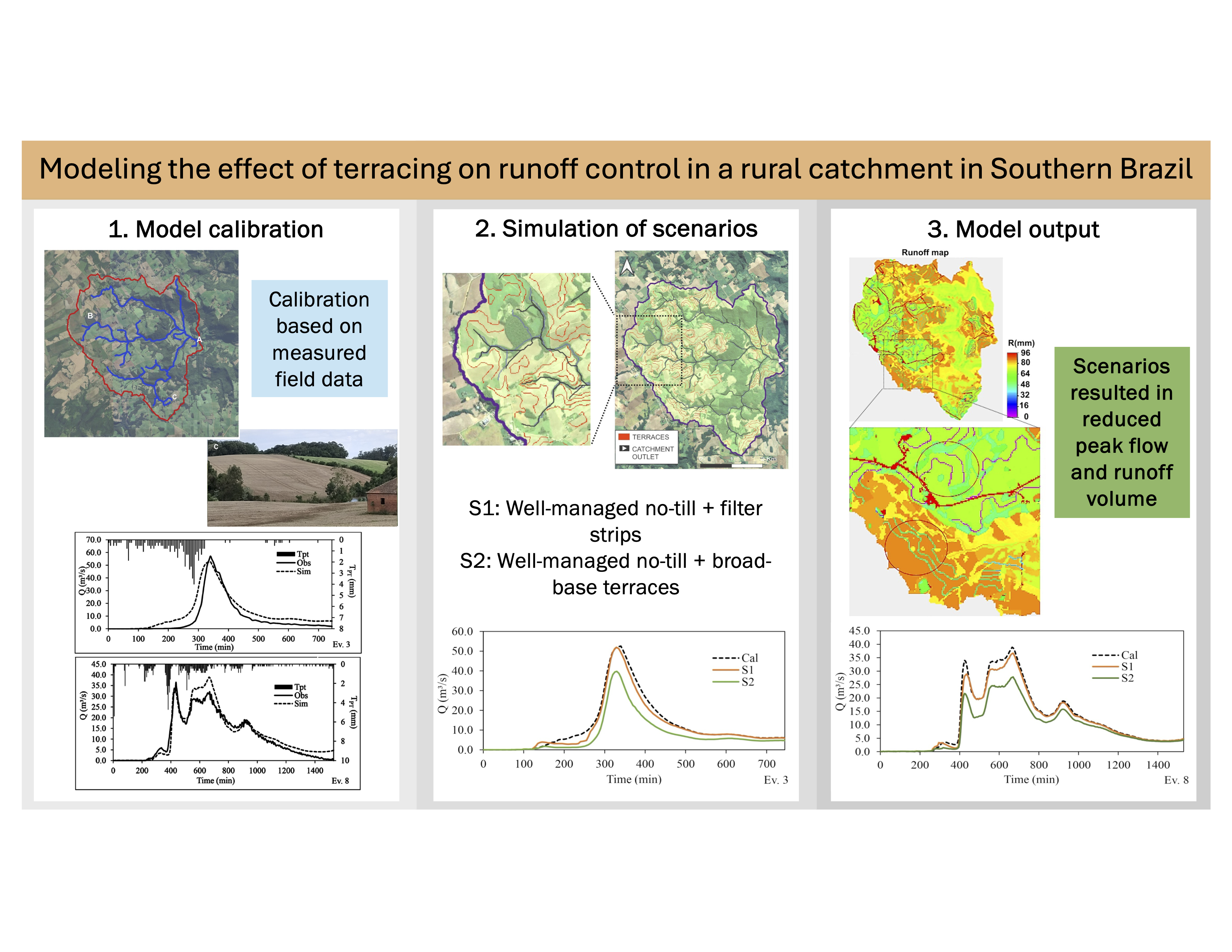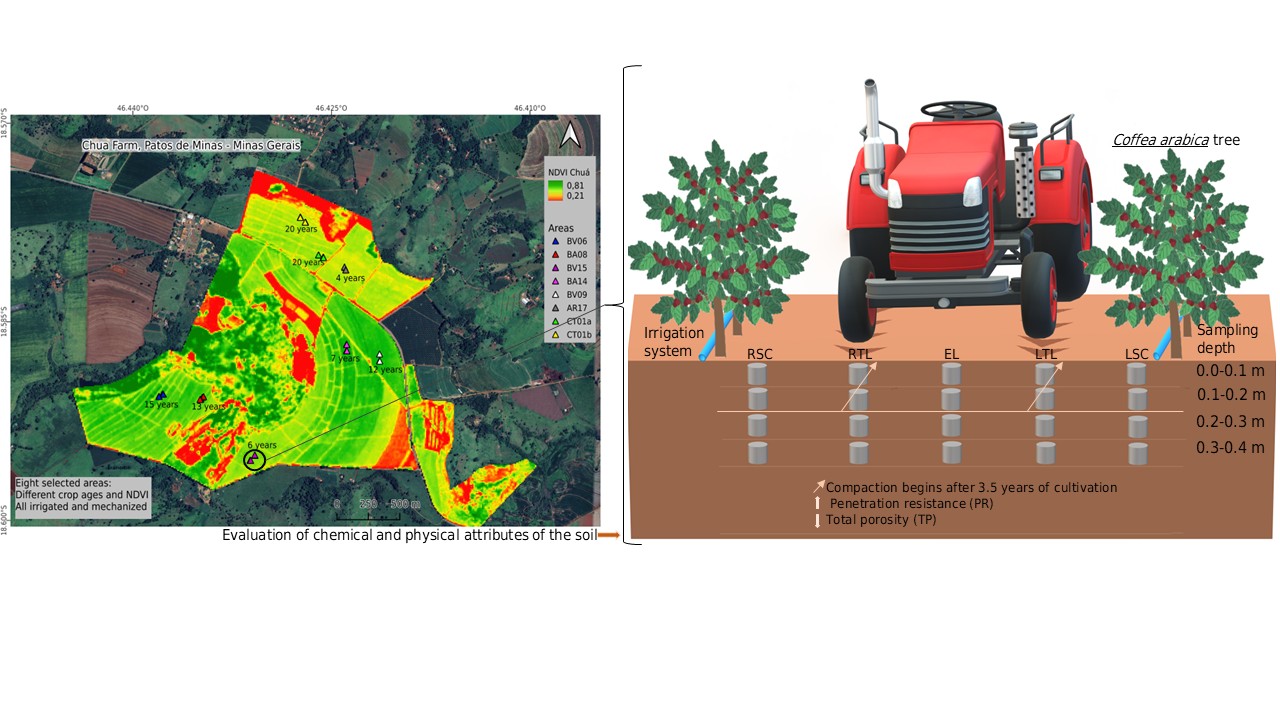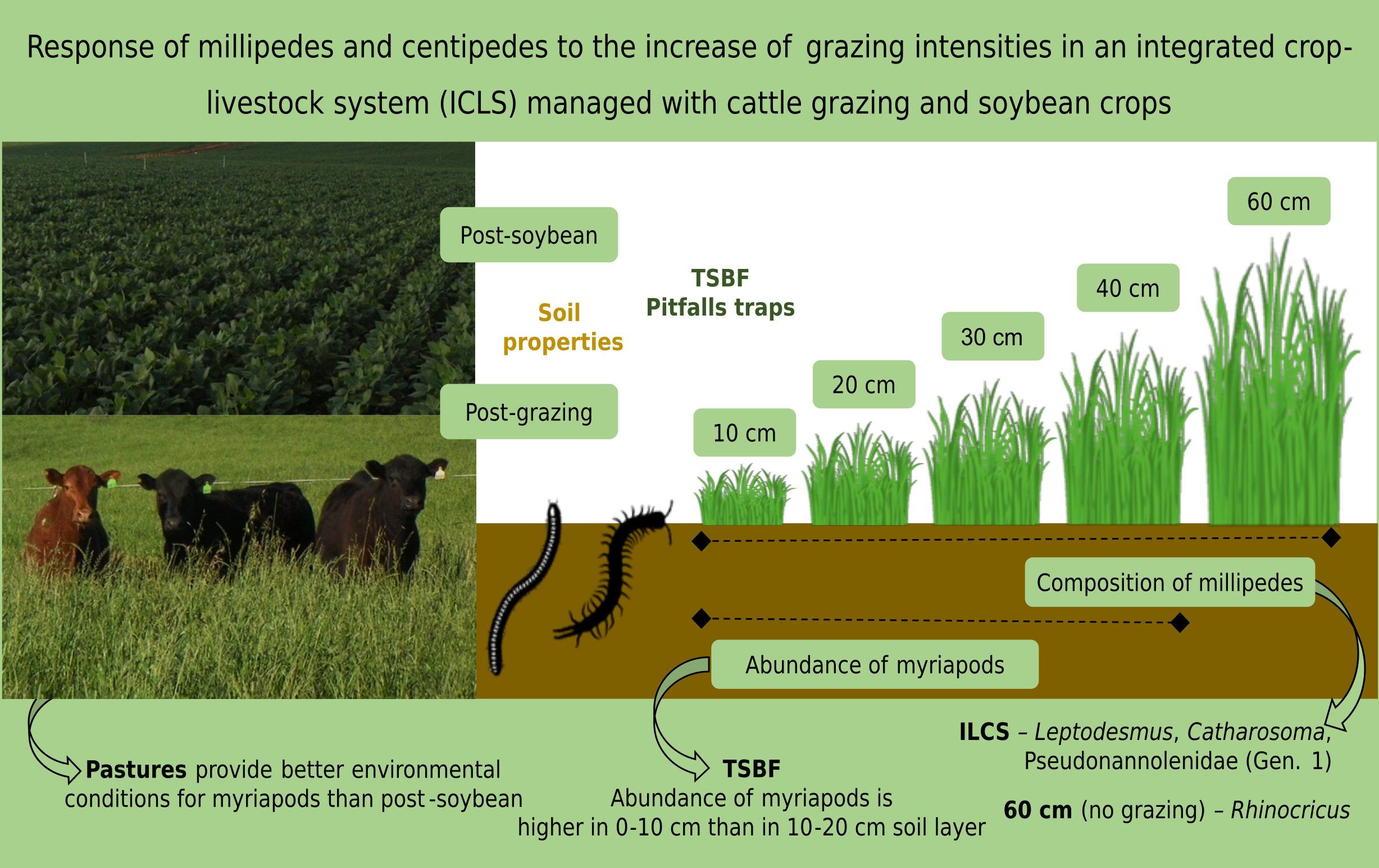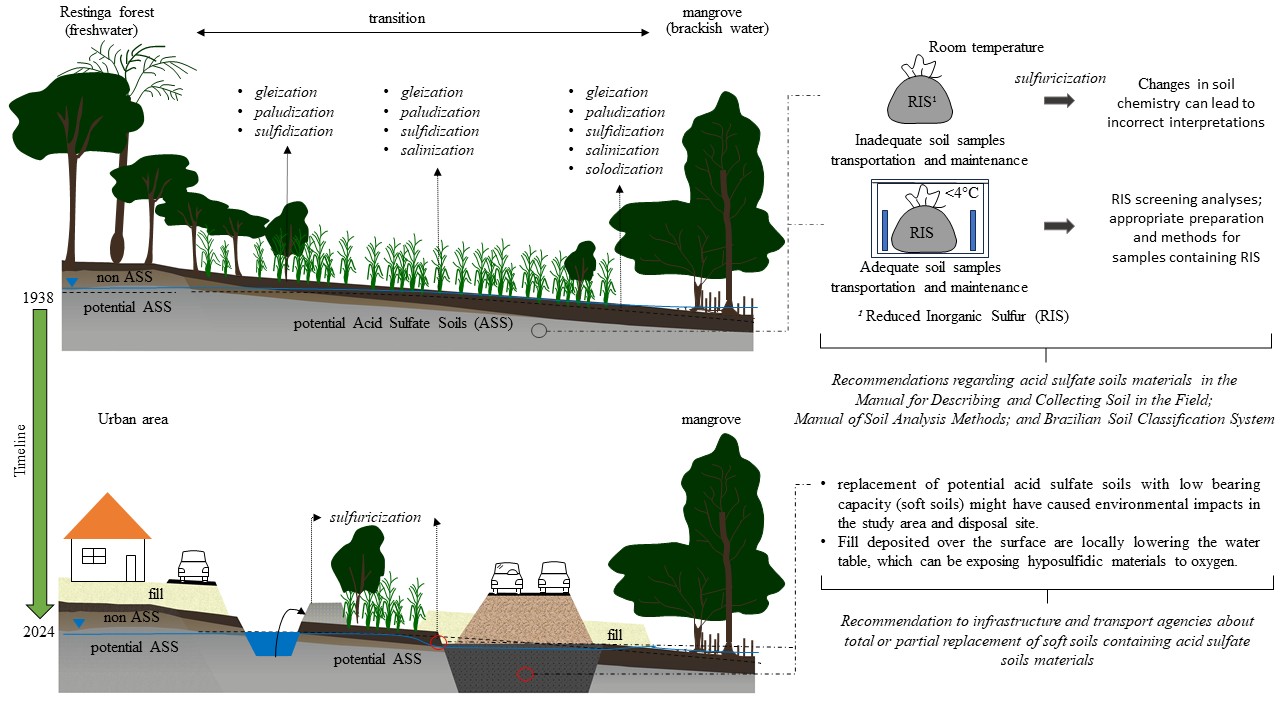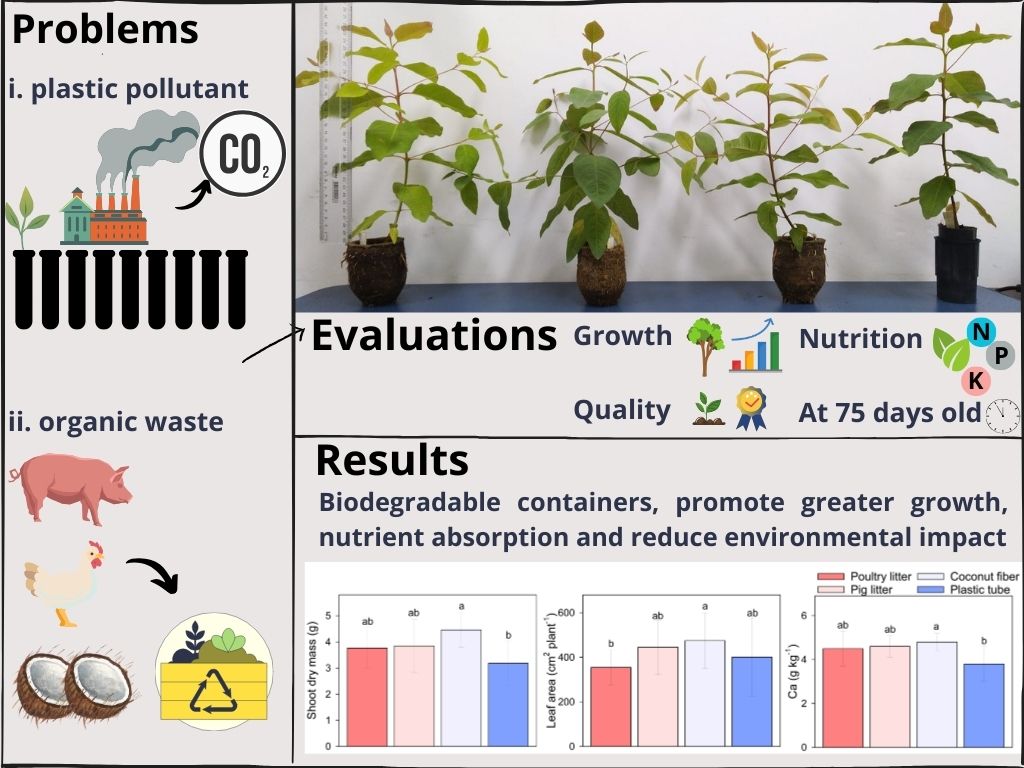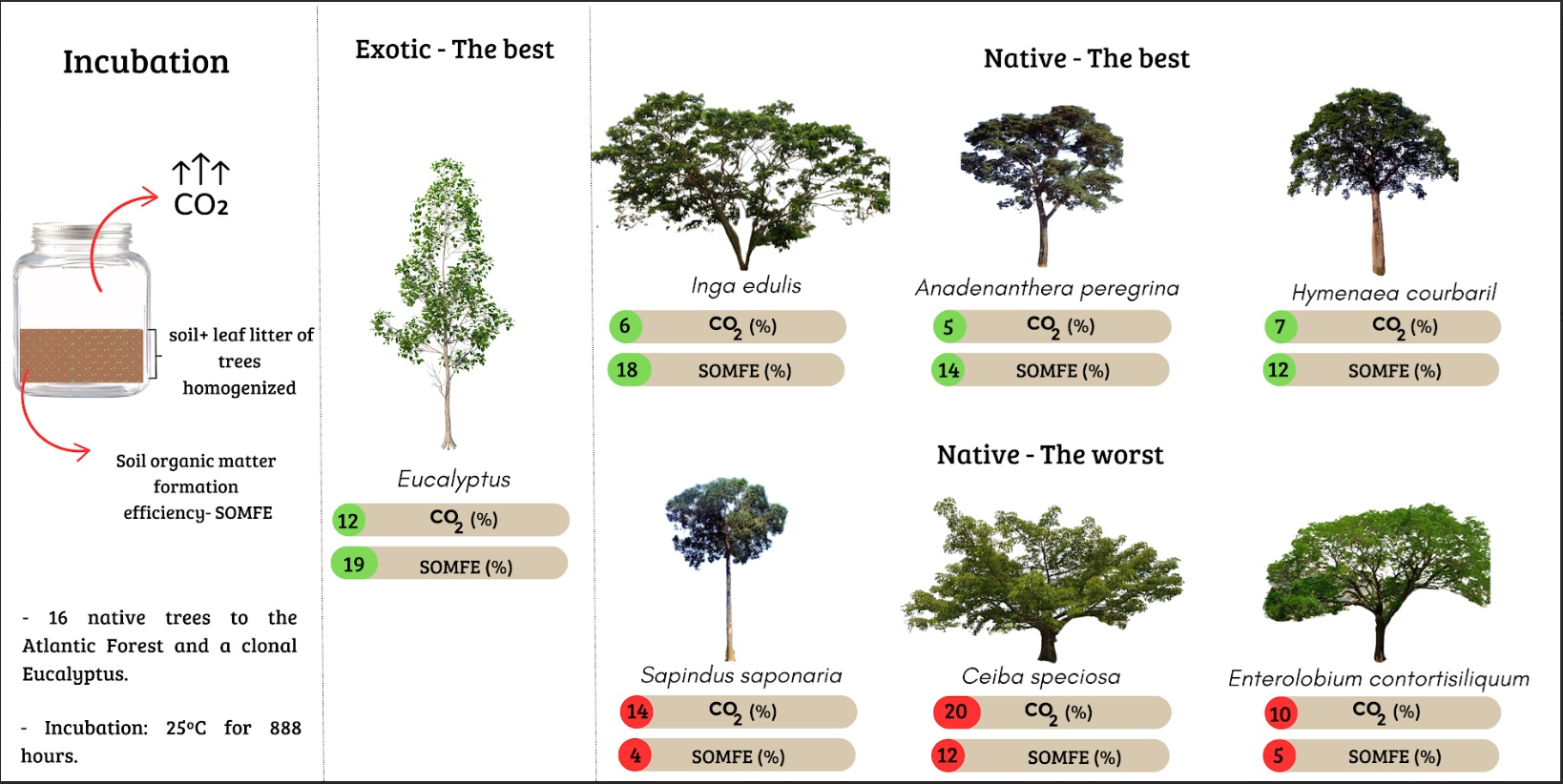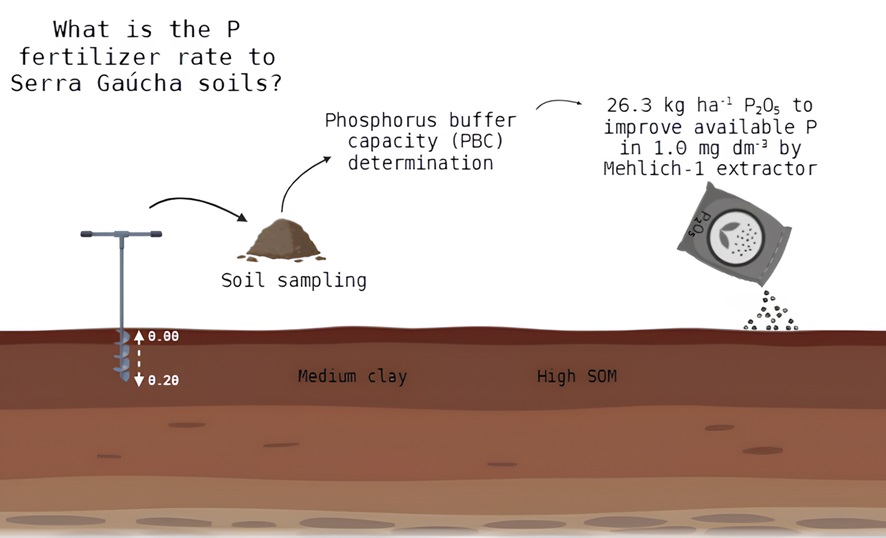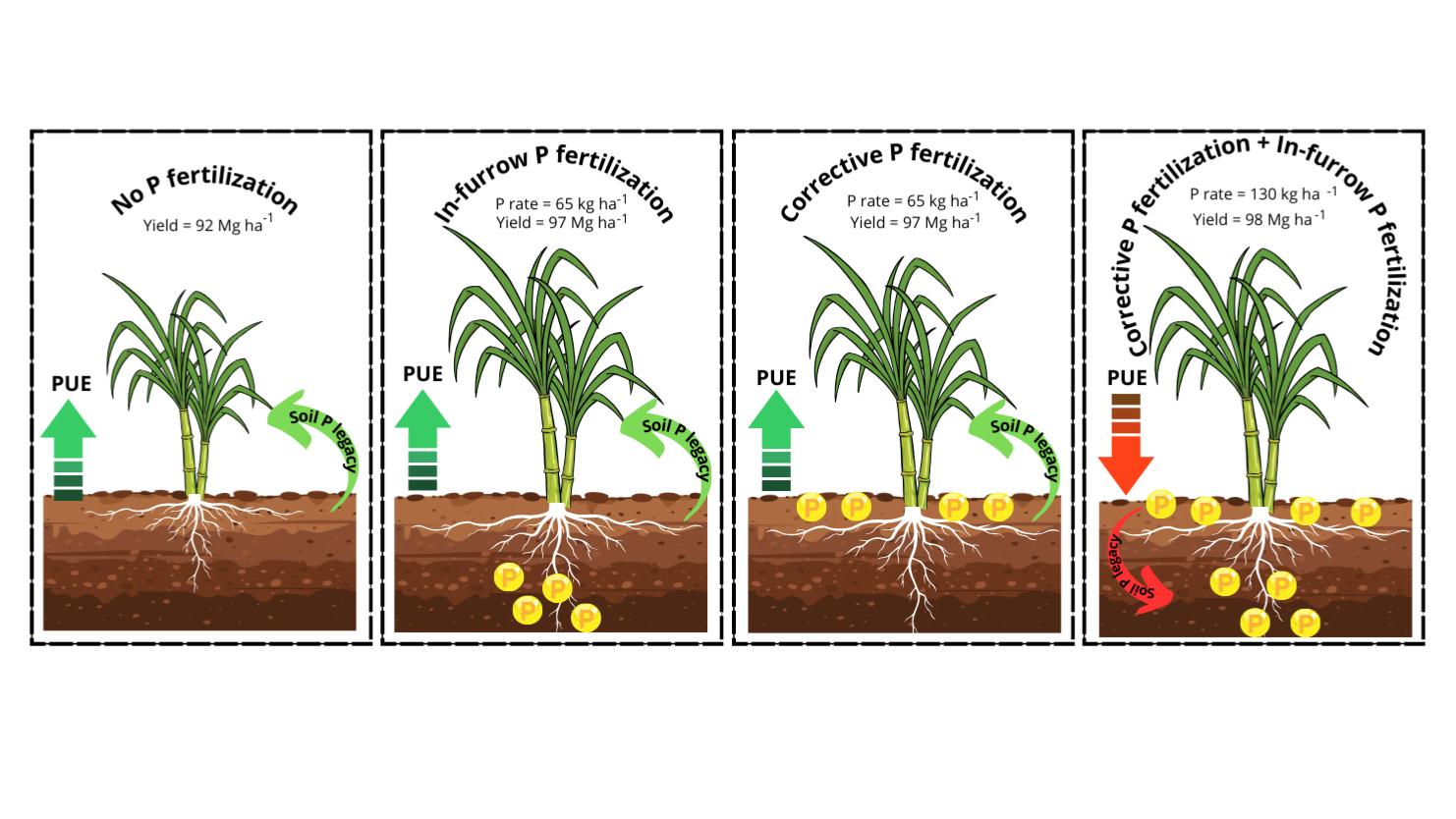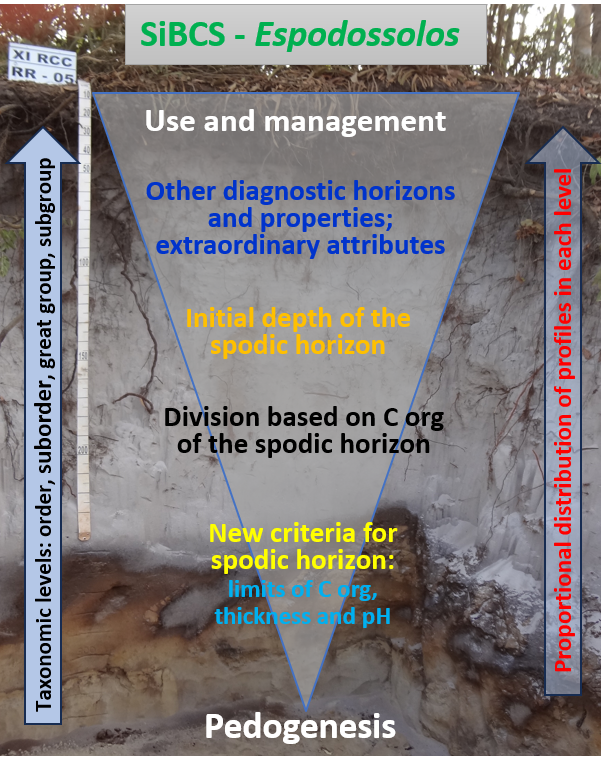Agronomic efficiency of partially acidulated and granulated Arraias phosphate rock
17/Jun/2025
ABSTRACT Natural phosphate rocks (PR) are characterized by low phosphorus (P) solubility in water. Acidulation is the normal method to raise P solubility of these materials, however, it increases the cost and causes operational issues. The aim of this study was to evaluate the agronomic efficiency of partially acidulated and micro-granulated Arraias phosphate rock, which has a lower P content (6.88 %) than normal apatite concentrates. Two experiments were carried out in a greenhouse at the University of Rio Verde, […]
Modeling the effect of terracing on runoff control in a rural catchment in southern Brazil
16/Jun/2025
ABSTRACT Extreme weather events, such as heavy rains and droughts, necessitate the rapid adaptation of production systems to prevent the degradation of natural resources and to maximize production potential. Defining adaptive practices requires an in-depth understanding of the factors that control the formation and propagation of surface runoff and the identification of specific practices tailored to each location. No-till system, coupled with complementary storm runoff management practices, is effective in controlling surface runoff and related processes. However, the planning of […]
Mechanized and irrigated coffee cultivation promotes physical subsurface constraints in Oxisols
16/Jun/2025
ABSTRACT Soils of the Cerrados (Brazilian Savanna) are deep, well-structured, and well-drained, with flat to gently undulating terrain that favors mechanization for coffee cultivation. However, these soils are susceptible to compaction. This study aimed to assess the effect of mechanization on the physical characteristics of an Oxisol under irrigated coffee cultivation in the Alto Paranaíba-Minas Gerais State. We selected eight areas with different cultivars and years of Arabica coffee plantation, sampling five positions: right soil under the tree crown (RSC), […]
How do centipedes and millipedes respond to grazing intensity in an integrated crop-livestock system with soybean-pasture succession?
16/Jun/2025
ABSTRACT Centipedes and millipedes promote important functions in the ecosystem. However, land use intensification in agricultural areas can reduce the abundance and diversity of these organisms. To understand the effect of grazing intensification on communities of centipedes and millipedes, we sampled these organisms in an integrated crop-livestock system (ICLS) experiment, cultivated for 13 years with soybean (Glycine max) in the summer and black oat (Avena strigosa) + Italian ryegrass (Lolium multiflorum) for cattle grazing in the winter. Treatments consisted of […]
Methodological and environmental implications for coastal soil identification as support for land management
16/Jun/2025
ABSTRACT Understanding methodological and environmental implications for coastal soil identification is essential for developing integrated approaches to land management that address soil physical and chemical aspects, environmental dynamics, and their importance for coastal ecosystem sustainability. In this context, a study was conducted in a natural environment, near a marine extraction reserve that was degraded by irregular urbanization and road construction in Santa Catarina Island, Florianópolis, SC, Brazil. The study focused on identifying ecological patterns and impacts associated with acid-sulfate soils. […]
Biodegradable containers affect the morphological and nutritional aspects of Eucalyptus urophylla seedlings
16/Jun/2025
ABSTRACT Forest seedlings production generally uses polypropylene plastic tubes due to their advantages, as root protection and easy operation. However, these tubes have limitations, as small substrate accommodates capacity, there is a possibility of root deformation, and there is a composition of pollutant and non–renewable material. It is necessary to find environmentally correct alternatives. This study aimed to evaluate the morphological and nutritional aspects of Eucalyptus urophylla seedlings produced in biodegradable containers, compared to plastic polypropylene tubes. For this, seedlings […]
Native and exotic tree leaves litter contributions to soil organic matter formation in revegetation strategies
16/Jun/2025
ABSTRACT The use of native and exotic species in the reforestation of degraded areas has been considered an important strategy to improve soil quality. However, there is still scarce information about which species are more efficient for soil organic matter (SOM) formation. This study aimed to evaluate the decomposition of leguminous and non-leguminous tree litter, its impact on light organic matter (LOM), particulate organic matter (POM), and mineral-associated organic matter (MAOM) dynamics, and consequently, SOM formation efficiency. Leaf litter from […]
Phosphorus buffer capacity of soils with medium clay and high organic matter content
16/Jun/2025
ABSTRACT Determining soil phosphorus (P) buffer capacity (PBC) is crucial for establishing optimal P fertilizer rates in corrective fertilization practices. However, in subtropical regions, changes in soil chemical and physical properties, such as soil organic matter (SOM) accumulation and texture modifications, can significantly impact PBC values, altering soil adsorption capacity. Consequently, P rates recommended by generalized guidelines for soil correction in these regions may be insufficient to achieve the critical P level in the soil. This study aimed to define […]
Corrective and maintenance P fertilization on sugarcane yield in multi-sites of south-central Brazil
16/Jun/2025
ABSTRACT Corrective phosphate is a usual practice in poor soils to improve P levels and yield potential. However, the broadcast P application in soils with high P fixing capacity may have low efficiency. This study evaluated sugarcane yield response to corrective phosphate (broadcast application and incorporated) and in planting maintenance phosphate application in four sugarcane sites during three crop cycles in South-Central Brazil. The experimental design was a factorial 2 × 5: presence or absence of corrective phosphate and five […]
Espodossolos of Brazil: A review of structure and composition of classes
29/May/2025
ABSTRACT Soil taxonomic systems seek to express pedogenic processes in their classes by choosing attributes or differential characteristics to identify classes at different categorical or hierarchical levels. Due to the advancement of knowledge, classification systems are periodically revised and/or expanded, and this may happen based on the evaluation of the database of these attributes or characteristics for a given class. In this context, the analysis of a broad set of Espodossolos (the equivalent of Spodosols or Podzols) from different pedoenvironments […]

